By Maria Schweer-Collins, PhD, Research Assistant Professor, HEDCO Institute for Evidence-Based Educational Practice
Today we are revisiting findings from the HEDCO Institute’s review on school-based depression prevention programs for K-12 students. Education leaders continue to wrestle with how best to support students with mental health challenges, particularly depression, one of the most common mental health challenges facing students today. We will summarize what we found in our review of the literature and then introduce our new interactive data tool. This tool will help you explore the research studies in the literature and how their findings may be relevant to your school community and the students you support.
Overview of findings on the HEDCO Institute’s Review of School-Based Depression Prevention Programs
The systematic review and meta-analysis conducted by the HEDCO Institute aimed to identify studies on school-based depression prevention programs and summarize the effectiveness of these programs for reducing students’ depression symptoms, and other key outcomes, such as anxiety symptoms, substance use, suicidality, and student well-being.
After reviewing the literature, our research team identified 60 studies involving nearly 38,000 students that examined the effectiveness of school-based depression prevention programs. These 60 studies were conducted across the world, with the largest number of studies occurring in Australia or the United States. Depression prevention programs were delivered to different student age groups by different types of providers, including behavioral health providers, school professionals (teachers or other school personnel), or researchers.
We found that school-based depression prevention programs are likely to reduce the severity of depression symptoms in K-12 students. On average, students who participated in the depression prevention programs had a 33% reduced risk of depression compared to students in the comparison conditions.
The HEDCO Institute’s School-Based Depression Prevention Programs Interactive Tool
Because context is critical to understanding when research applies to specific school settings and student populations, the HEDCO Institute team collaborated with Dr. Leslie Perdue, a HEDCO Institute Affiliate Scientist and Researcher at the Kaiser Permanente Center for Evidence-Based Practice to help you answer the question: Do school-based depression prevention programs support youth?
With this tool, you can find out what research studies exist on the specific school context or student group you’re most interested in. You can also find out whether depression prevention programs are effective in reducing depression symptoms for your student group or school context of interest.
A step-by-step guide on using the interactive tool
First, access the web-based interactive tool.
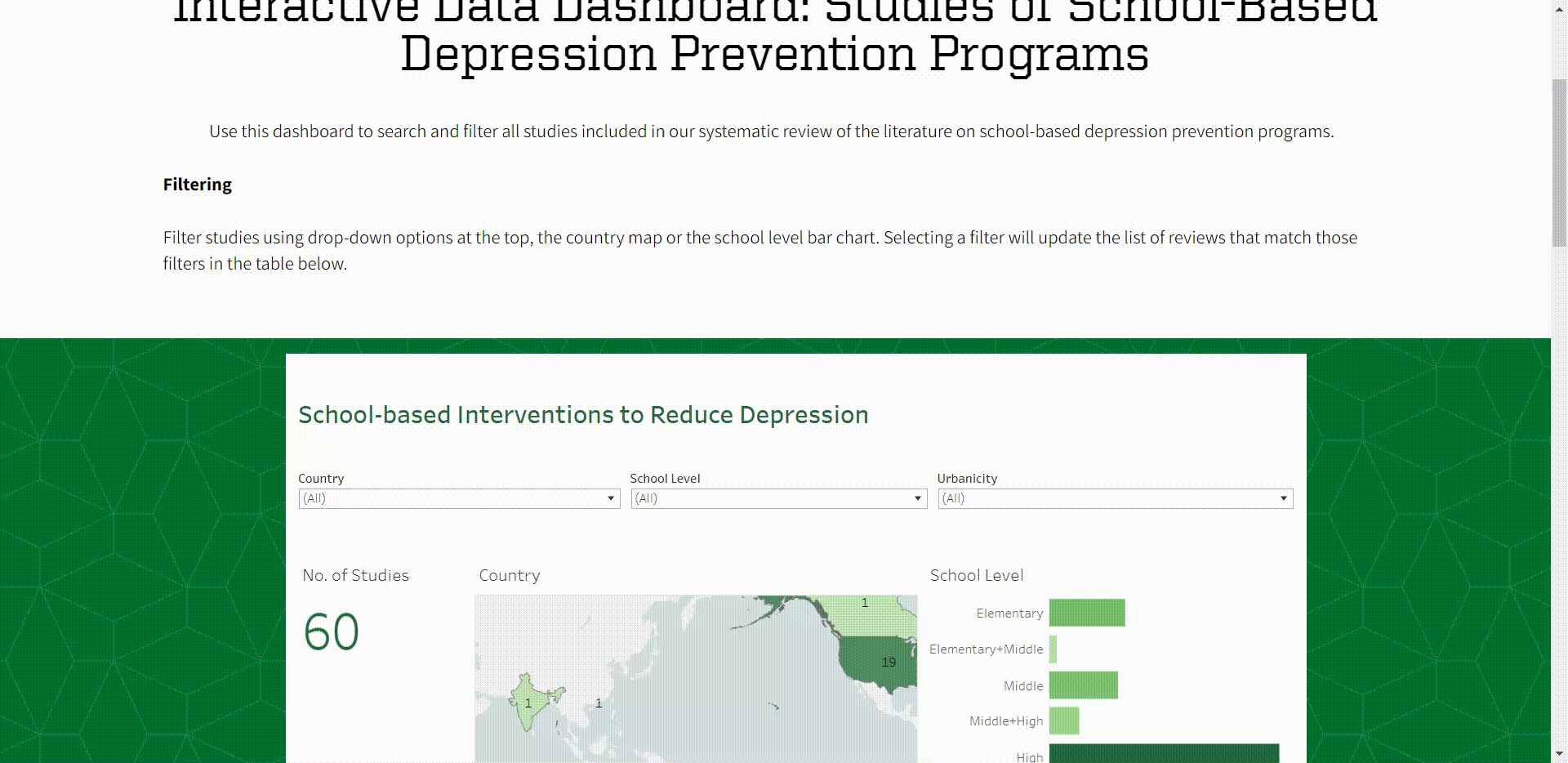
Next, you can decide if you are interested in all the available research or if you want to understand the research as it applies to your specific country. If you want to filter the research for your country only, you can click on the country drop-down and select the country of interest. Here we’ve filtered for studies in the United States and Australia only, the two countries where the majority of research studies have been conducted.
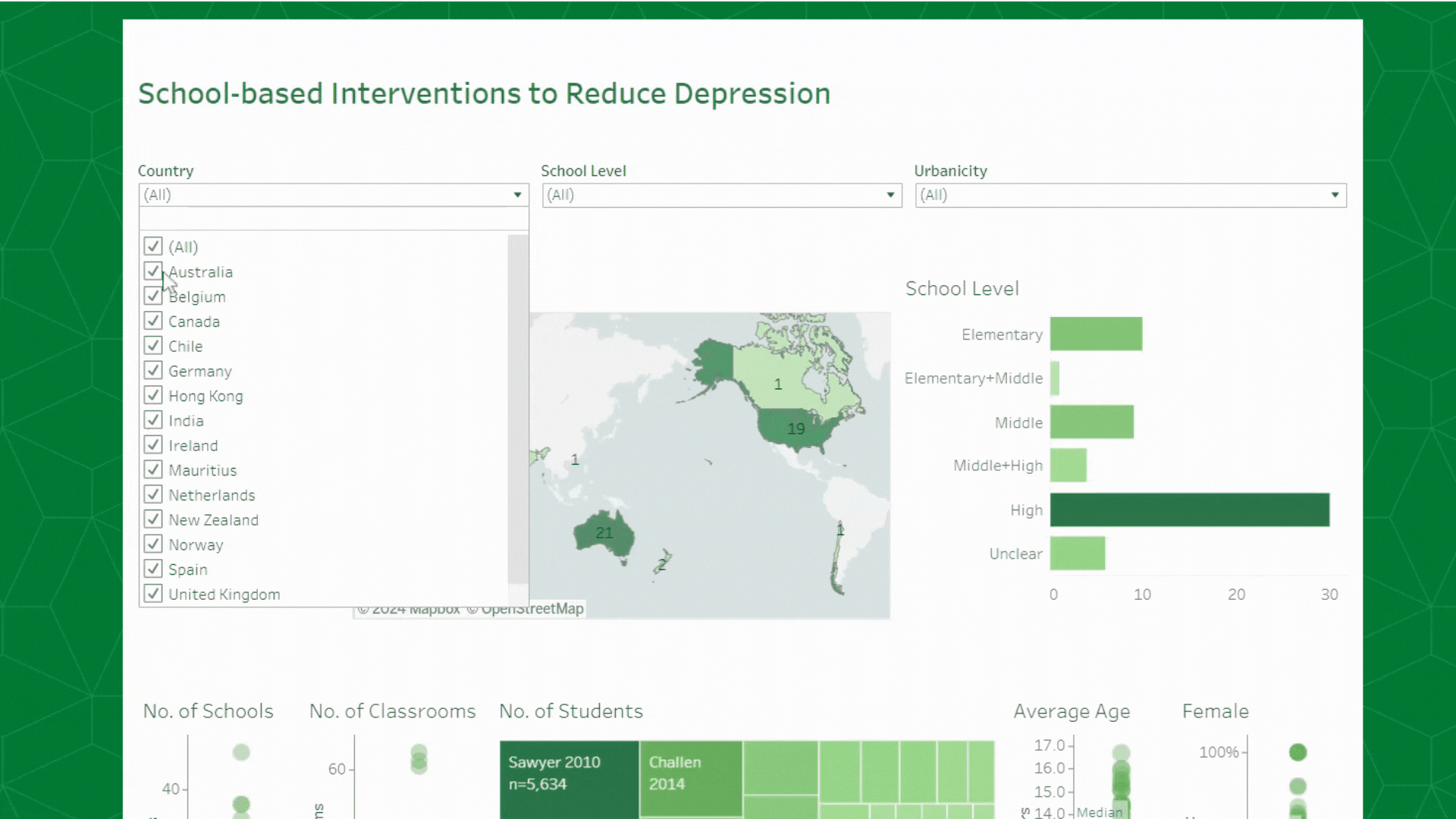
In this interactive tool, the information about the included studies will update as you apply filters. For example, after filtering the studies conducted in the United States and Australia, the tool shows the majority of studies on school-based depression prevention have been conducted with high school students, with students being around 13 years of age, and just over half of students being female.

You can also select other school features of interest using the filters at the top of the interactive tool. For example, you might only be interested in the research conducted in urban elementary schools. Once you click on each filter, you can select those options – urban and elementary school – from a drop-down menu. You can select one or more features, and you aren’t required to have a certain number of features selected. In our example here, after selecting elementary schools in urban settings, there are four studies that match these criteria.
Note that if you select features and the tool does not update, it could be that no studies match the combination of geographic and school features you selected.
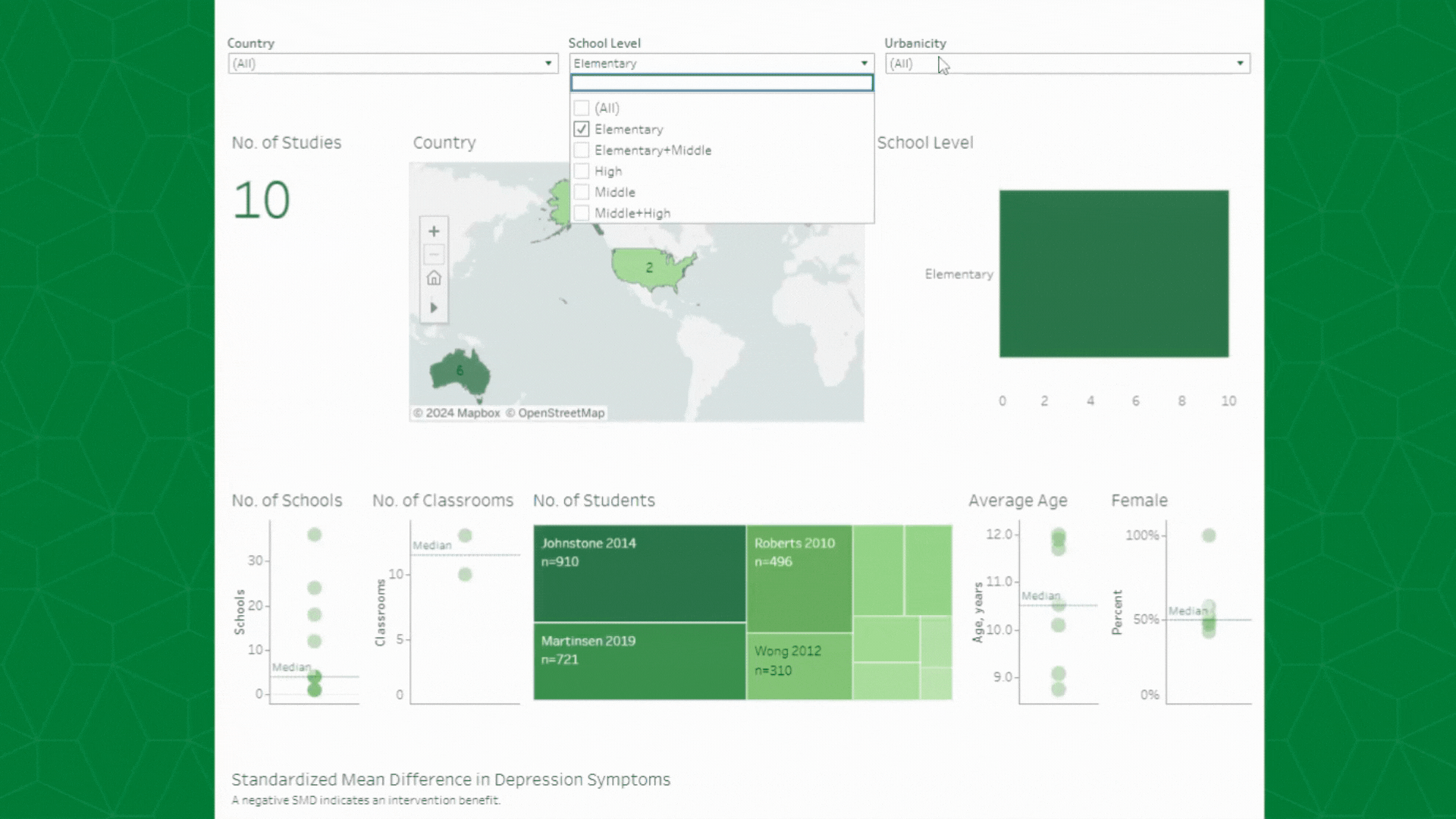
Now that you have selected the types of studies that match your school setting or student population, a table that summarizes the different research studies that meet the selected criteria will show up below the visuals.

The table contains important study-specific information including:
- The primary author of the research study and the year the study was published
- The type of depression prevention program that was evaluated in each study
- The primary depression outcome evaluated in each study (i.e., the specific measure used to assess student depression)
- The timing of when student depression outcomes were assessed (“Weeks”)
- Statistical information on how effective the program was in reducing depression symptoms (“SMD”).
For example, the first study in the table “Johnstone 2014” had positive beneficial effects for students who participated in the Aussie Optimism Program. The green dots and larger negative values indicate greater benefits of the program in reducing depression symptoms for students in the depression prevention program when compared to students in the comparison condition.
If you are interested in reading more about the depression prevention programs implemented in these studies, we have provided in-depth program information starting on page 15 of our review report. These profiles can further help you assess if a program might be a good fit for your students and school based on cost, training needs, and implementation requirements.
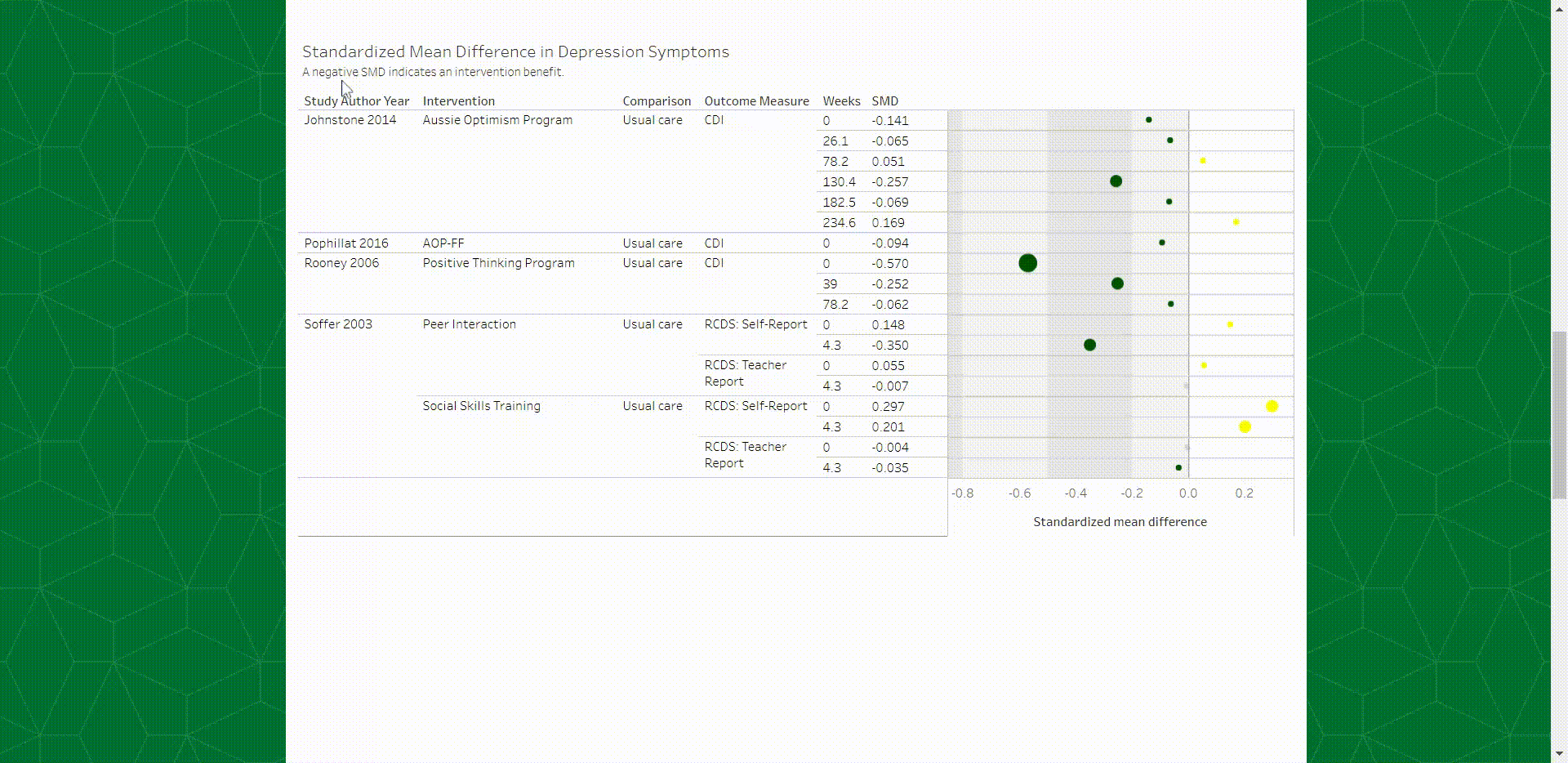
Finally, if you want to start over, you can always reset the filters at the top of the interactive tool. We hope this interactive tool is useful as your school considers different depression prevention programs.
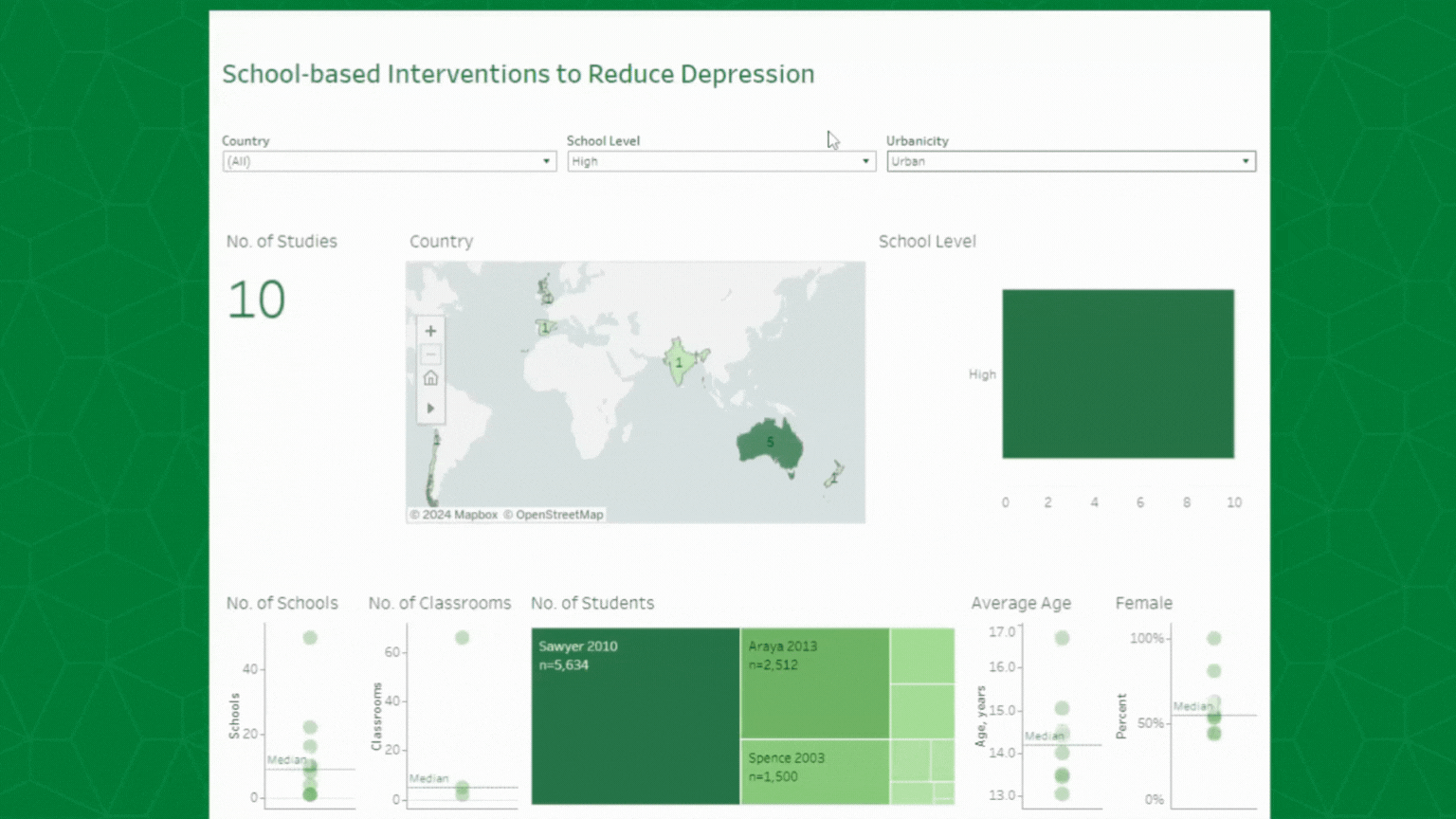
HEDCO Institute Blog 9- February 29, 2024

